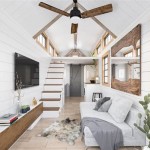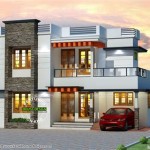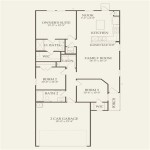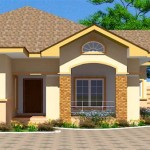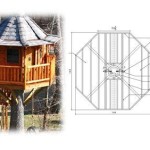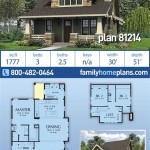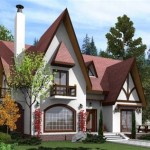Small Modular Cabin Plans: A Comprehensive Guide
Small modular cabin plans offer an attractive and practical solution for those seeking a retreat from the hustle and bustle of city life or a cost-effective way to expand their living space. These plans provide detailed blueprints and specifications for constructing compact, energy-efficient cabins that can be customized to meet individual needs and preferences. Modular design principles allow for efficient construction, reduced waste, and a shorter build time, making them increasingly popular for both homeowners and builders. This article will delve into the key aspects of small modular cabin plans, exploring their benefits, design considerations, and construction processes.
Benefits of Small Modular Cabin Plans
Small modular cabin plans offer a wide range of benefits that make them a compelling choice for various projects. These benefits include:
Cost-effectiveness: Modular construction methods often translate to lower overall costs compared to traditional building techniques. Factory-built components reduce labor costs, minimize waste, and streamline the construction process. This efficiency results in faster build times, leading to significant cost savings on labor and site management.
Sustainability: Modular cabins often prioritize sustainable practices. Their compact size minimizes the environmental footprint, while factory production allows for efficient use of materials and reduces waste on-site. Many plans incorporate energy-efficient features like insulation, high-performance windows, and renewable energy sources, promoting responsible living.
Customization: Though the plans offer a pre-designed framework, they are highly adaptable. Individual preferences and site conditions can be factored in, allowing for customized layouts, exteriors, and interior finishes. Options for different roof styles, window configurations, and flooring materials allow for creative expression and personalization.
Flexibility: Small modular cabins offer flexibility in their use. They can serve as guest houses, home offices, workshops, or even as a stand-alone primary residence. The modular nature also allows for future expansion, enabling the addition of more modules as space requirements change. This adaptable design caters to a wide range of needs and preferences.
Key Design Considerations for Small Modular Cabin Plans
When choosing small modular cabin plans, several design considerations are crucial to ensure a functional and aesthetically pleasing outcome. These considerations include:
Space Optimization: Small cabins necessitate careful space planning to maximize functionality. Plans should incorporate smart storage solutions, multi-functional furniture, and efficient use of vertical space to create a spacious feeling despite the limited square footage. Open floor plans can enhance the overall sense of openness and flow.
Energy Efficiency: Energy efficiency should be a priority in small cabin design. Plans should incorporate features like high-performance insulation, energy-star appliances, and well-designed window placements to minimize energy consumption and reduce heating and cooling costs.
Natural Lighting: Adequate natural lighting is crucial in small spaces. Plans should include large windows to maximize daylight penetration, creating a bright and inviting interior. Careful window placement can also enhance views and connect the cabin to its surrounding environment.
Exterior Aesthetics: The exterior design of the cabin should complement the surrounding landscape and reflect the owner's personal style. Plans often include options for various roof styles, siding materials, and landscaping elements to create a visually appealing and harmonious integration with the site.
Construction Process of Small Modular Cabin Plans
The construction process for small modular cabin plans is relatively straightforward and typically involves the following steps:
1. Site Preparation: The site needs to be properly prepared for the foundation. This includes clearing vegetation, grading the land, and installing utilities.
2. Foundation Construction: The foundation is built according to the plan specifications. Common foundation types for small cabins include concrete slabs, piers, and crawlspaces.
3. Module Delivery and Installation: Pre-fabricated modules are delivered to the site and carefully placed on the prepared foundation. Skilled technicians connect the modules using precision methods to ensure structural integrity.
4. Interior and Exterior Finishes: Once the modules are in place, interior and exterior finishes are completed. This includes installing plumbing, electrical, flooring, drywall, paint, and cabinetry.
5. Final Inspections and Occupancy: After completion, the cabin undergoes final inspections to ensure compliance with building codes. Once approved, the cabin is ready for occupancy.
Small modular cabin plans offer a practical, efficient, and cost-effective way to achieve your dream of living in a compact, sustainable, and personalized space. By carefully considering design considerations and understanding the construction process, you can successfully realize your vision of a comfortable and beautiful cabin retreat.

Customizable Small Modular Cabins And Cottages In North Ina Georgia Virginia South Westwood

Tiny Log Cabin Kits Easy Diy Project Craft Mart

Modular Log Cabins Small Cabin Homes Plans

Small Cabins A Guide To Building 2024 Field Mag

Modern Traditional Cabin Kits Summerwood S

10 Fabulous Cabin Plans To Suit You Prefab Log Homes Modular Small

Prefab Log Cabins For In West Virginia Homes Wv

Modular Log Cabin For Under 10 000 Project Small House

Cool Prefab Custom Tiny Houses And The Best Diy Cabin Plans Craft Mart

Log Cabin Project Small House

